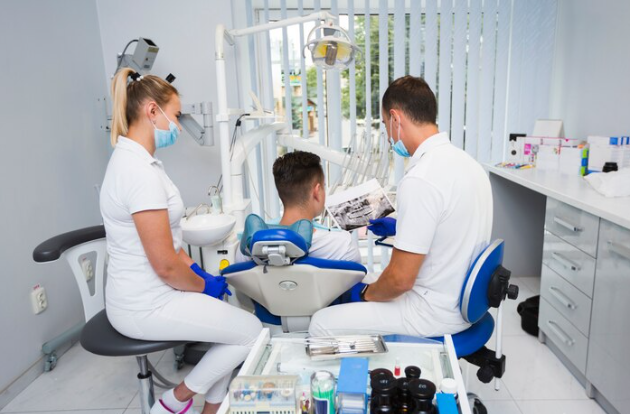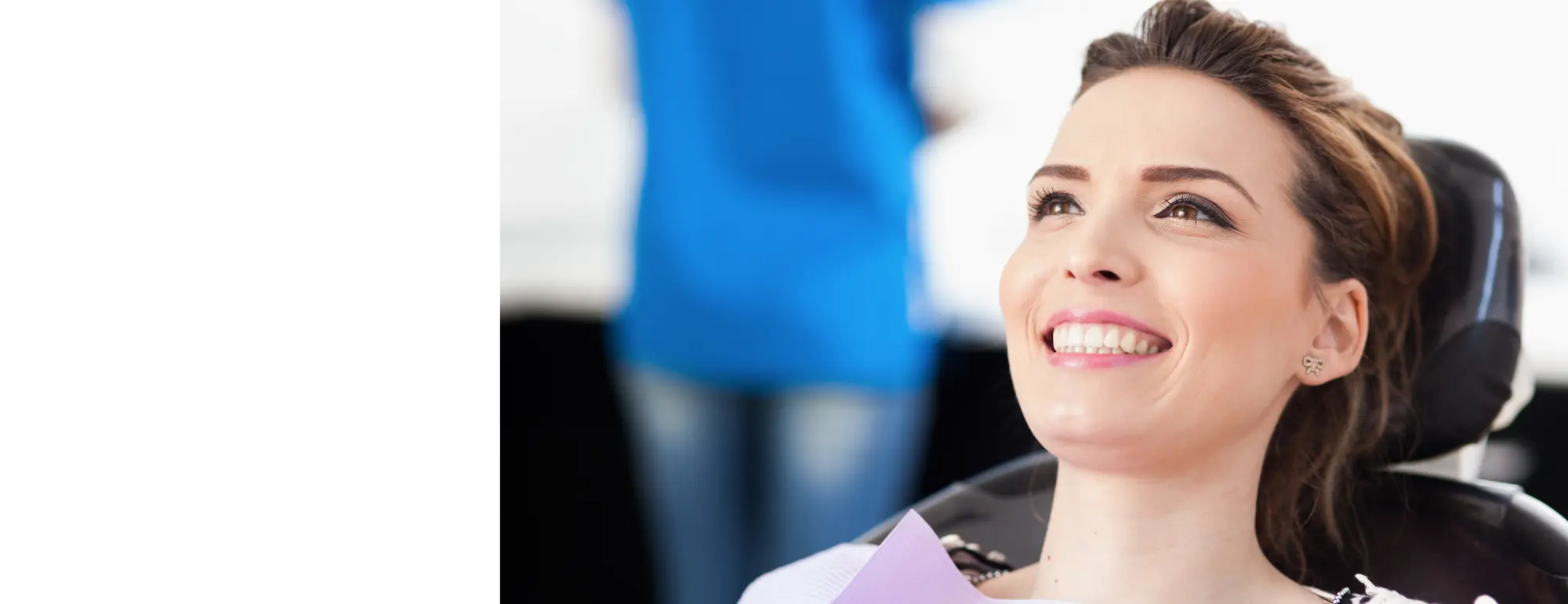Children’s drawings are more than just cute pictures—they can be windows into their feelings, especially when it comes to something like a dental visit. The anxiety kids feel at the dentist can often show up in their artwork, even when they can’t quite put their feelings into words.
For many kids, the dentist’s chair is a place full of unknowns, and their drawings might reveal just how worried or scared they are. Whether it’s jagged teeth, dark shadows, or uncomfortable-looking figures, these little scribbles can give us important clues about their emotional state.
By looking closely at their art, parents and dentists alike can better understand a child’s fears and provide a more supportive, less stressful experience at the clinic.
How can children’s drawings reflect their feelings during dental visits?
Children’s drawings can provide an insightful reflection of their feelings during dental visits, offering a way to express emotions that may be difficult to articulate verbally. Here’s how their drawings can indicate their emotional state:
- Fear and Anxiety: Children who are anxious about their dental visit may draw exaggerated, frightening images. For example, large, scary dental tools, exaggerated facial expressions of fear, or intimidating figures such as a “scary” dentist may suggest heightened anxiety. The darker or more chaotic the drawing, the more likely it is to reflect fear.
- Avoidance or Withdrawal: If children draw themselves avoiding the dental chair or hiding, it may indicate they are uncomfortable with the idea of being at the clinic. This avoidance can point to deep-seated fears or negative past experiences.
- Comfort and Familiarity: Conversely, positive drawings—such as happy, smiling faces or friendly dental equipment—indicate a more positive perception of the visit. Children who depict the dental office as a calm and inviting place likely feel safe and comfortable with their surroundings.
- Security in the Environment: The drawing includes comforting elements, such as family members or favorite toys, that suggest the child feels secure and reassured during their visit.
- Processing Emotions: After a visit, children may use their artwork to process their feelings. If their drawings shift from negative to positive over time, it suggests they’re adapting and overcoming their fears.
Children’s drawings are a valuable tool for understanding their emotional state during dental visits. They help dental professionals address concerns and create a more supportive environment.
What emotional cues are found in dental-themed drawings by kids?
Dental-themed drawings by children can reveal various emotional cues that help dental professionals understand how a child feels about their visit. These visual expressions provide valuable insight into their emotional state. Here are some common emotional cues found in dental-themed drawings:
Fear or Anxiety:
- Large, intimidating dental tools: Overly exaggerated depictions of dental instruments, like sharp or large objects, indicate that the child may be fearful or anxious about the procedures.
- Scary or angry dentist: If the dentist is drawn with a stern or frightening expression, it suggests that the child may perceive the dentist as threatening.
- Dark colors: Predominantly dark or harsh colors (red or black) may indicate discomfort, fear, or distress about the experience.
Confidence or Comfort:
- Smiling dentist or patient: A dentist with a smile or a happy face on the child indicates they feel safe, secure, and comfortable with the dental experience.
- Friendly imagery: Including non-threatening objects like toys, pets, or familiar family members in the drawing suggests that the child finds comfort in their surroundings and feels more at ease.
Confusion or Ambivalence:
- Disorganized or unclear images: Chaotic drawings or lack of detail may indicate confusion or ambivalence about the dental visit, showing that the child doesn’t fully understand the experience or feels uncertain about it.
Avoidance or Withdrawal:
- Hiding or avoiding the dental chair: If the child draws themselves or their character trying to avoid it or hiding behind objects, it could signify a desire to avoid the experience, which may be linked to fear or previous negative experiences.
By interpreting these emotional cues, dental professionals can better tailor their approach to each child’s unique needs, easing their anxiety and making their dental experience more positive.
How do colors and shapes in drawings relate to dental stress in children?
Colors and shapes in children’s drawings can offer significant clues about their emotional state, particularly regarding dental stress. These visual elements provide insight into how children feel about dental visits. Here’s how different colors and shapes relate to dental stress:
Colors:
- Dark or intense colors (black, red, dark blue) often indicate fear, anxiety, or discomfort. Children may use dark shades to express negative emotions related to their dental visits, such as worry or tension. Red, in particular, can symbolize aggression, anger, or heightened stress.
- Bright colors (yellow, orange, light blue): Lighter, warmer colors are often associated with positive emotions like happiness or calm. A bright-colored drawing may indicate the child feels safe, comfortable, and relaxed during their dental experience.
- Muted or dull colors can suggest uncertainty, sadness, or a lack of excitement. A child may feel emotionally withdrawn or indifferent due to stress or confusion surrounding the visit.
Shapes:
- Sharp, jagged, or irregular shapes can indicate tension, fear, or distress. Sharp, spiky lines around dental tools or the dentist may reflect the child’s perception of the situation as threatening or uncomfortable.
- Rounded, smooth shapes: Curved and soft shapes represent safety and comfort. Children who draw rounded lines for the dental chair, dentist, or themselves may express a sense of ease and security.
By paying attention to these visual cues, dental professionals can better understand a child’s emotional state and adjust their approach to reduce stress and anxiety.
Why are drawings used to understand pediatric dental anxiety?
Drawings are used to understand pediatric dental anxiety because they provide a non-verbal way for children to express their feelings and perceptions, which they may struggle to communicate verbally. Here’s why drawings are effective in understanding pediatric dental anxiety:
- Expressing Emotions Non-Verbally: Children often struggle to articulate their fears or anxieties about dental visits. Drawing allows them to project their feelings onto paper, providing a safe and effective outlet for emotional expression. This helps dental professionals understand the child’s emotional state without relying solely on verbal communication.
- Revealing Subconscious Fears: Through drawings, children may express subconscious fears they aren’t fully aware of. For example, exaggerated or distorted images of dental tools or the dentist can indicate heightened anxiety or past traumatic experiences that they haven’t consciously processed.
- Identifying Specific Fears: Drawings can highlight specific triggers for anxiety, such as the appearance of the dental office, certain instruments, or even the dentist’s facial expression. These visual cues allow professionals to identify and address the sources of fear directly, creating a more supportive and reassuring environment for the child.
- Tracking Emotional Progress: Dental providers can track the child’s emotional progress by comparing drawings over time. If the child’s drawings become more positive or show less fear, this signals improvement in the child’s comfort level with dental visits.
Using drawings to understand pediatric dental anxiety helps providers gain valuable insight into a child’s emotional world, allowing for more tailored and effective care.
Understand Your Child’s Dental Anxiety Through Their Drawings
Children often struggle to express their feelings verbally, especially regarding their fears about dental visits. Observing their drawings can give us valuable insight into their emotional state, helping us address their concerns effectively.
Whether it’s fear of the dentist, certain tools, or the dental environment, their artwork provides clues that allow us to create a more comforting and reassuring experience. At Gentle Touch Family Dentistry, we’re committed to making dental visits as stress-free as possible. Contact us today to learn more!



